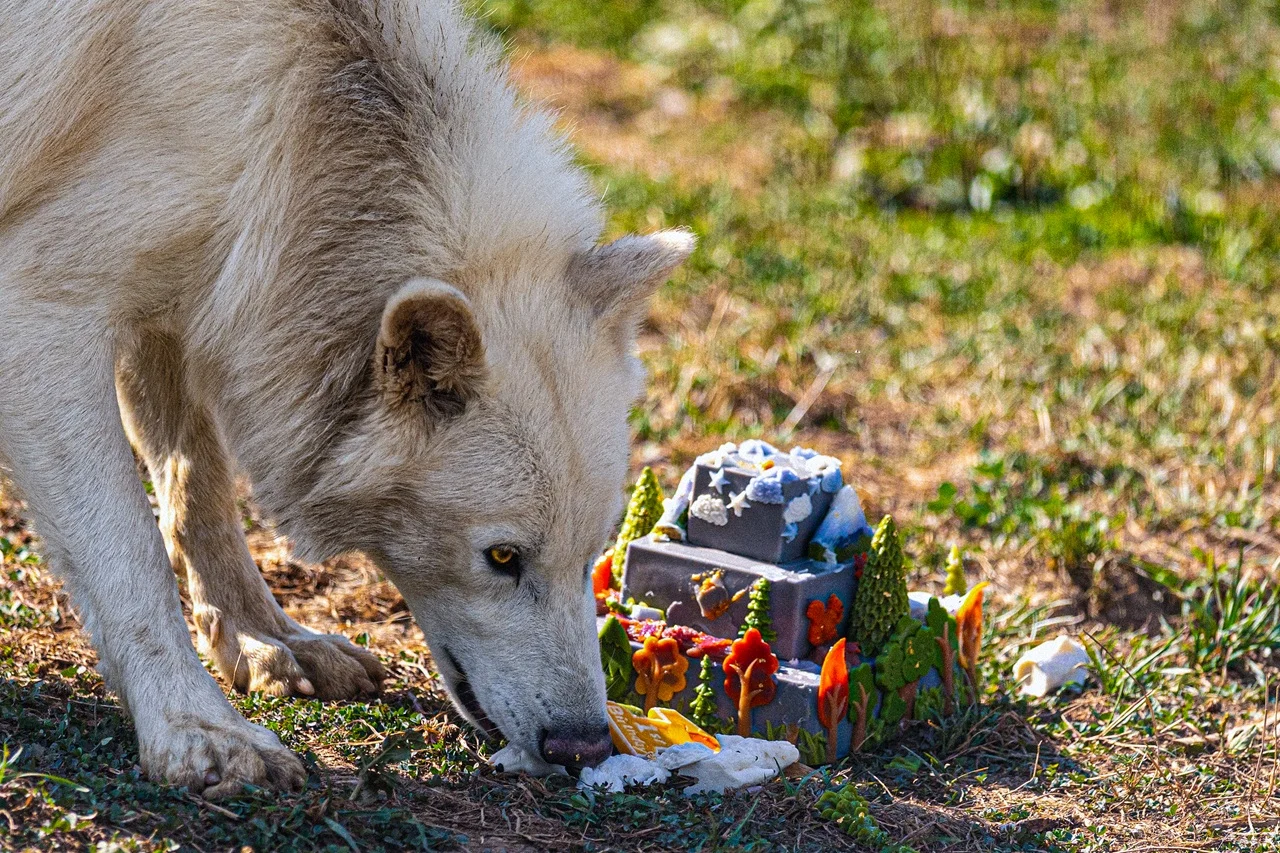Colossal Biosciences, known worldwide as the first and only company dedicated to de-extinction, has reached a groundbreaking milestone. Today, the team celebrates the first birthday of Romulus and Remus—the first living dire wolves in over 12,500 years. Once thought lost forever to time, the dire wolf has stepped out of prehistory and into the modern world, thanks to a blend of cutting-edge genetics, conservation science, and an ambitious vision to restore lost biodiversity.
Romulus and Remus, now towering figures at over 120 pounds each, were born one year ago—making them the very first successfully de-extinct animals in recorded history. Their story is not only one of scientific triumph but also of cultural imagination, hope for conservation, and the dawning of a new era in wildlife restoration.
From Myth to Reality: The Dire Wolf’s Legacy
For many, the dire wolf is a creature of legend. Popularized by the HBO phenomenon Game of Thrones, dire wolves were long assumed to be mythical beasts rather than flesh-and-blood predators. In truth, they were a very real species: large, formidable canids that roamed the Americas until they disappeared at the end of the last Ice Age, around 12,500 years ago.
Colossal’s breakthrough came from ancient remains—specifically, DNA extracted from a 13,000-year-old tooth and a 72,000-year-old skull. By mapping these sequences and carefully editing them into the genome of a modern relative, Colossal scientists were able to produce living, breathing dire wolf pups. In the process, they executed 20 unique precision germline edits, including 15 based on ancient genetic variants. This achievement set an unprecedented standard in precision editing, not only for de-extinction but for animal genetics as a whole.
What once seemed like science fiction has now become fact. The dire wolf is no longer a relic of the past—it is alive again.
A Year of Growth, Play, and Discovery
Over the past twelve months, Romulus and Remus have thrived in ways that exceeded even Colossal’s expectations. The wolves have grown rapidly, with Romulus projected to surpass 140 pounds as he matures. Both currently consume over five pounds of meat daily, a diet carefully curated to replicate what their ancestors once ate.
Their meals include a rich variety of ground meats, stew-sized cuts, and full carcass portions such as deer, cattle, and rabbit. To support their natural instincts, bones are regularly provided for chewing, and small rodents within their preserve occasionally serve as live prey, allowing the wolves to hone their hunting skills. Training rewards—such as freeze-dried beef liver—are introduced to strengthen the bond between the wolves and their handlers while stimulating cognitive development.
Romulus and Remus live on a sprawling 2,000-acre ecological preserve, a haven certified by the American Humane Society and registered with the USDA. This space is more than just a home; it is a controlled ecosystem designed for exploration, enrichment, and long-term study. The preserve includes specialized engagement zones, varied terrain, and secure fencing that ensures both freedom and safety. A six-acre core area houses veterinary facilities, management buildings, and natural dens, providing both comfort and care.
Monitoring is constant but unobtrusive. Advanced drone tracking, live-feed cameras, and a team of trained staff oversee their welfare around the clock. Weekly weigh-ins and veterinary exams ensure the wolves maintain peak health, while behavioral observations help the team refine their care routines. With ten full-time animal care professionals and an on-site veterinarian, Romulus and Remus receive individualized attention tailored to their unique needs as the first of their kind.
Looking forward, Colossal plans to expand this small but historic pack, with a goal of six to eight dire wolves living together in the preserve.
A Birthday Like No Other
To mark this extraordinary first birthday, Colossal spared no effort in celebration. The event featured a blend of science, artistry, and culture, highlighting just how much the dire wolves have captured the world’s imagination.
One highlight was a collaboration with Emmy Award–winning composers Stan Bush and Lenny Macaluso. Known for iconic rock anthems like The Touch and Never Surrender, the duo created a brand-new track titled Happy Birthday Dire Wolf. With soaring guitar solos and driving rhythms, the anthem pays tribute to the power, resilience, and symbolic importance of Romulus and Remus. The song was paired with a video montage featuring never-before-seen footage from the wolves’ first year, offering the public an intimate glimpse into their growth and adventures.
Another creative touch came in the form of a one-of-a-kind birthday cake, crafted by Mishka, a luxury dog bakery in San Francisco. Founder and chef Olia Rosenblatt and her team designed a custom three-tier, wolf-shaped cake made entirely from organic, species-appropriate ingredients—including beef pâté, broth, and liver. The cake’s introduction to Romulus and Remus was overseen by Colossal’s animal husbandry experts to ensure safety and enjoyment.
The celebration wasn’t merely a party—it was a milestone shared with a global audience, a symbolic gesture that emphasized the merging of science, storytelling, and community in Colossal’s work.
Voices From Colossal
Key members of the Colossal team reflected on the significance of this achievement, underscoring not only the technical triumph but the emotional resonance of raising the first dire wolves in millennia.
Matt James, Chief Animal Officer, who was present at their birth, described the experience as unparalleled:
“We’ve witnessed their physical, emotional, and social growth—something no one has seen in 12,500 years. Remus is fearless and bold, while Romulus is inquisitive, cautious, and confident.”
Beth Shapiro, Colossal’s Chief Science Officer, emphasized the scientific importance of the past year:
“The dire wolves are thriving—beyond anything we could have imagined. Over the past year, we’ve learned so much from Romulus, Remus, and their sister Khaleesi. Most importantly, the edits worked as expected and the animals are healthy. You can see it in their size, strength, and their striking white coats. Watching their development has been extraordinary.”
For Ben Lamm, Colossal’s CEO and co-founder, the dire wolves embody something even larger than science alone:
“Romulus, Remus, and Khaleesi are the first animals ever brought back from extinction. They represent hope in the fight against biodiversity loss and proof that we can begin to restore what has been lost. The dire wolf’s story is a banner of possibility—for science, for conservation, and for humanity.”
The Bigger Picture: Science, Conservation, and Hope
The birth and survival of Romulus and Remus carry implications far beyond the walls of Colossal’s preserve. Their existence signals the dawn of a new field in conservation biology—de-extinction not as fantasy, but as a viable tool to combat the biodiversity crisis.
By demonstrating that long-lost species can be revived, Colossal has opened doors to the potential restoration of other iconic animals, from the woolly mammoth to the thylacine. More importantly, the techniques refined in bringing back the dire wolf have applications in preserving today’s endangered species, giving scientists new tools to strengthen populations at risk of disappearing forever.
Romulus and Remus are more than wolves reborn. They are symbols of resilience and reminders of humanity’s responsibility. Their presence challenges us to rethink what is possible and to embrace the idea that loss does not have to be permanent if innovation, collaboration, and care are applied.
A Future With the Dire Wolf
As the dire wolves grow, Colossal envisions a future where these creatures once again take their place in balanced ecosystems. While their immediate lives will remain within the safety of the preserve, long-term goals include broader ecological studies, potential rewilding, and contributions to biodiversity restoration projects worldwide.
The first birthday of Romulus and Remus is not simply a celebration of two animals, but a marker of history. In them, the past meets the future, and what was once thought impossible has become reality.
As Colossal looks ahead, the howl of the dire wolf—silenced for over twelve millennia—echoes once more, reminding us that the story of life on Earth is still being written.
ABOUT COLOSSAL
Colossal was founded by emerging technology and software entrepreneur Ben Lamm and world-renowned geneticist and serial biotech entrepreneur George Church, Ph.D., and is the first to apply CRISPR technology for the purposes of species de-extinction. Colossal creates innovative technologies for species restoration, critically endangered species protection and the repopulation of critical ecosystems that support the continuation of life on Earth. Colossal is accepting humanity’s duty to restore Earth to a healthier state, while also solving for the future economies and biological necessities of the human condition through cutting-edge science and technologies. To follow along, please visit: www.colossal.com.



